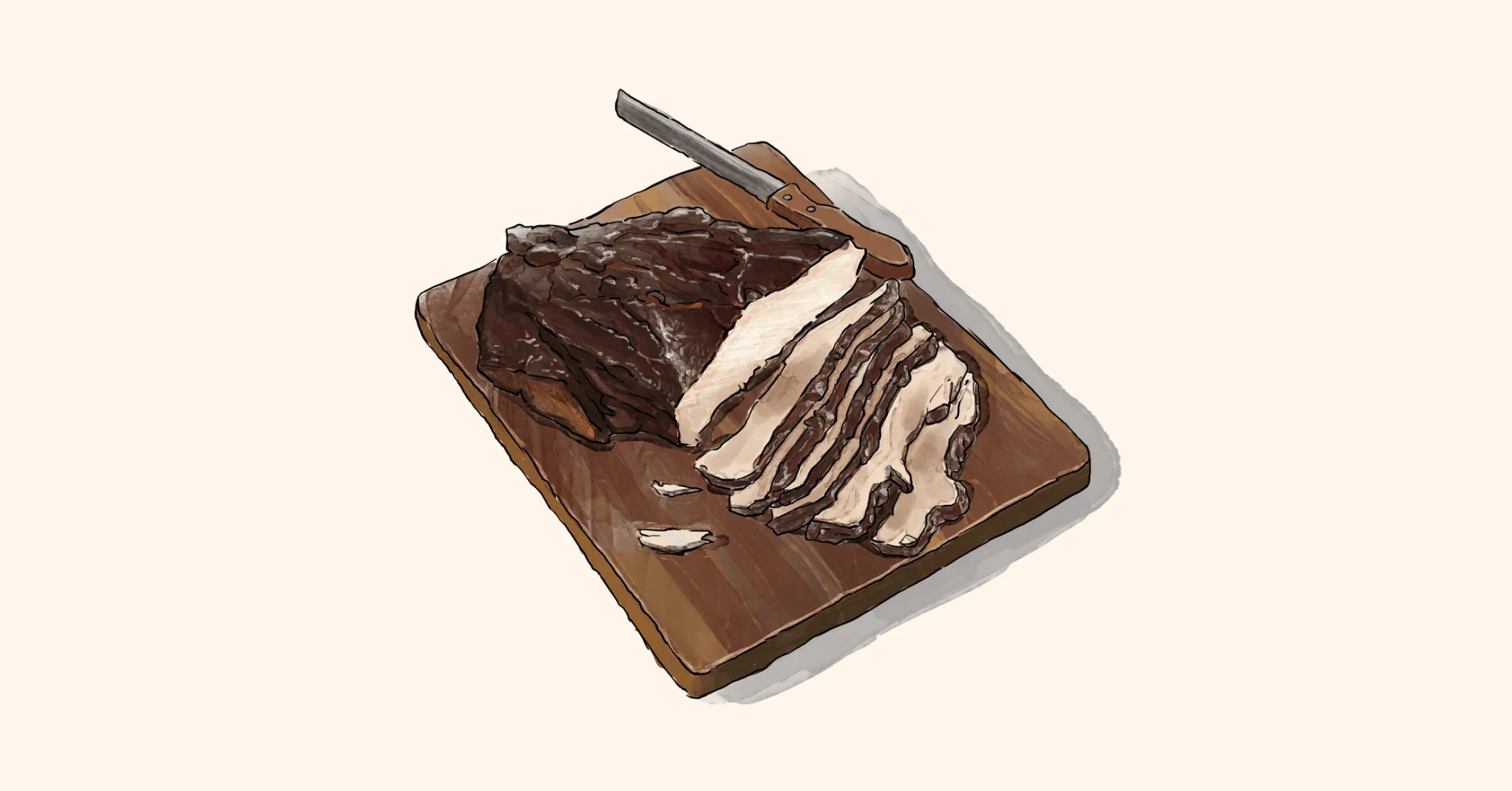Central Texas Smoked Brisket
Contributor Tim Davis brings his Central Texas Smoked Brisket recipe to our CNCF Cookbook. It's simple to make but takes practice to master this pinnacle of BBQ.
Tim DavisTrunk

Ingredients
- 10-20 pounds of “Full Packer” brisket (ask your butcher). This can be done with just the point or flat section, it will just cut time off the cook.
- 50% 16-mesh ground black pepper (any coarse black pepper will do, if that’s all you have. Just not finely ground table-pepper.)
- 50% Morton’s kosher salt
- That’s it! 1:1 salt to pepper!
Directions
- Ideally, this should be done with a “full packer” brisket. This means the complete brisket, including the “Point” and “Flat” muscles. It should be anywhere between 10 and 20 pounds if you have the right cut. If you only have access to the Point or the Flat separately, this is OK. The Point is the “marbled” side, and the “Flat” is the leaner side. Use what you can get, adjust your cook accordingly.
- Tim recommends you check out YouTube for detailed instructions on Brisket trimming. There are so many methods. The basic “backyard” trim is to remove all the “hard fat from the backside that won’t render out. Trim the fat cap to 1/4 inch thick and even. Remove any meat and silverskin from the meat side.
- Once trimmed, apply the rub, dense and even. Let it fly! The rub is what creates the bark. As a general rule, apply as much rub as you think is enough, then double it. It takes more than you think. Let the rub adhere and sweat the meat for 30 or so minutes before you smoke it.
- Set the smoker (or oven) to 225°F. Make sure it’s holding evenly before you put the brisket in. Pellet grills and smokers with temp controllers make the job easier. You need a constant, steady heat. Don’t keep opening the lid to look at it! If you’re lookin’ you ain’t cookin’!
- This is the important bit. You’ll hear so many people talk about “X minutes per pound” and all that. Throw that out the window. We’re all about temperature. So put your constant temp probe in the thickest part of the flat muscle. Tim likes to put the brisket on the smoker around 9-10 pm, before going to bed, and let it smoke overnight. If it’s a smaller piece of a brisket, you can do it in the morning. You want plenty of time to cook and rest. You’ll keep it on the 225°F smoker until the brisket reaches around 140°-160°F internal temperature. Every steer is different; even with similar-sized briskets the time this takes can vary quite a bit.
- This part can be scary, because it’s unpredictable. Most briskets will generally stall. This just means it will look like it has stopped cooking. It can be anywhere from 140°-160°F, and it can last for hours, until you force it to break the stall or just wait it out. This is all part of the process of breaking down and rendering the fat into juicy goodness.
- This part can come at different times. Tim wraps the meat during the stall, which is usually at 140°-160°F, when he wakes up in the morning. This helps lock in the moisture and finish the cook. Pull the brisket out of the smoker and wrap it up tight with foil, or even better, “peach” butcher paper if you can get it. If this is your first brisket, foil is more forgiving to moisture, but it can make your bark a bit softer. Wrap it tight, and put it back on the smoker. You can crank it up to 350°F now to break the stall and finish it up faster. Now, we wait again until our constant probe hits 203°F!
- Tim starts checking his brisket for “doneness” at about 203°F. It’s basically done. He knows it’s “done” for temperature, but he is looking for tenderness. Stick the instant read probe into the brisket at the thick part. When it goes in smooth like butter, it’s done, anywhere from 203°F to 210°F. It’s all about feel. It takes a while for the collagen (fat) to convert to gelatin. This is what makes it moist and not chewy.
- Without a doubt, you absolutely cannot skip this step. Muscle fibers contract with heat and push out moisture. When you rest your meat, it provides time for those fibers to relax and draw moisture back in to settle. Take the brisket off the smoker (still wrapped in foil or paper), wrap it in a towel and throw it in a cooler. You want a full packer to rest for a minimum of 3 hours. It will stay piping hot for even 5 hours in a good wrap and cooler. As long as it stays above 140°F, you’re good.
- This is another stage where YouTube can help. Basically, you want to slice across the grain, not with the grain. The tricky part is that the point and the flat muscles run in different directions. You’ll cut one way on the flat and essentially perpendicular on the point. Make slices roughly the thickness of a pencil, or as thick as you see fit.
- Now it’s time to eat!
Published on
29 September 2022Category

Ready to kick the tires?
Use code DEPLOYNOW for $300 credit